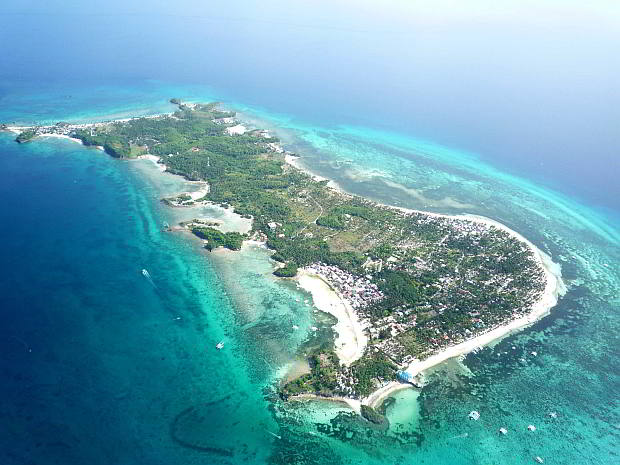The Cebu provincial government aims to protect Malapascua Island and its rich marine life through a revised plan for eco-tourism, Cebu Gov. Hilario Davide III said.
In a speech in Phuket, Thailand where he addressed the Inter-islands Tourism Policy forum, Davide said the 136-hectare island, already known to diving enthusiasts around the world, needs special attention because of the threat of “uncontrolled entry of tourists” and its limited supply of potable water.
Davide said he recently approved the Malapascua Island Eco-Tourism Development plan, which updates a 2002 plan crafted during the term of former Gov. Pablo Garcia and allocated P5 million for its initial implementation.
The way forward is to promote community-based tourism and marine conservation, where residents are engaged in protecting corals, mangroves and practice solid waste management, he said.
Malapascua is nine kilometers from the mainland of Daanbantayn town in north Cebu which was heavily-damaged by supertyphoon Yolanda last year.
“Our response to the devastation in the north is ‘build back better.’ This applies very importantly to the tourism industry. Our efforts of rebuilding the tourism industry is based on the assumption that: one, there will be another typhoon; and two, it could be stronger than the one which struck us in November last year,” he told officials.
The biggest challenge is coping with the “uncontrolled entry of tourists” and deficient supply of potable water as more visitors discover Malapasuca, he said.
Malapascua Island is best known for its diving tourism. Thresher sharks and manta rays frequent its waters particularly in Monad Shoal.
Davide said visitor arrivals in Malapascua “exceeded the usual percentages” after the island was featured in the Lonely Planet guidebook, a popular reference for budget-conscious European travelers.
At least 2.6 million tourists arrived in Cebu province last year, he said. Of these, 1.4 million were domestic travelers while over a million were foreign visitors led by Koreans as the biggest group, followed by the US, China and Japan.
Davide said the revised plan for Malapascua has five programs to achieve three goals.
These are proper use of resources, development directly beneficial to residents and protection of Malapascua’s local culture and natural resources.
The municipal government will have an education program to emphasize the need to protect corals, mangroves and practice solid waste management.
He said the province will build a small circumferential road as well as a desalination plant in the island and tap solar power for “cheap and reliable energy” to solve the problem of inadequate potable water supply in the area.
Over-pumping of wells has accelerated intrusion of salt water into the island’s aquifer.
A big number of local and 100 percent of all visitors drink bottled water ferried from the mainland, he said.
There will be a livelihood program for souvenir-making and other food delicacies as part of “branding” Malapascua’s unique identity.
“We are also establishing a protocol where we could engage private investors for a hybrid power supply – solar and wind – to supplement and hopefully replace the polluting diesel power generators now relied upon by the community,” he said.
The Aug. 20-22 forum in Thailand shared best practices of marine tourism, which includes scuba diving, water sports and other water recreational activities.
Davide attended the forum with provincial tourism officer Mary Grace Paulino and the governor’s wife Jobella. His spouse traveled there on personal expense.
Related Stories:
Capitol to allocate P5M for Malapascua projects
Thresher sharks like ‘Nemo’ in Malapascua
Lucky Cebu has shark tourism all year round


